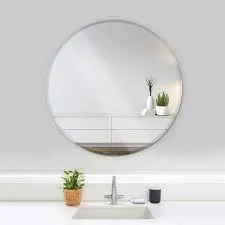

The Versatility and Applications of Float Glass Plates
Float glass plates, an integral part of the modern glass industry, are renowned for their superior quality and versatility. This type of glass has a smooth, flat surface, which is produced by floating molten glass on molten tin. This method yields a product that is not only uniform in thickness but also offers excellent optical clarity and minimal distortion. With these traits, float glass plates have found their way into a broad range of applications, from architectural elements to industrial uses.
One of the most significant advantages of float glass is its clarity. The manufacturing process ensures that impurities are minimized, leading to a crystal-clear product that is ideal for windows, mirrors, and display cases. In the construction industry, float glass is often used for facades, skylights, and partition walls. Architects appreciate its aesthetic appeal and functionality—floors and walls can reflect natural light, making spaces appear larger and more welcoming.
Another application of float glass plates is in the production of glass furniture. Designers favor this material for its sleek appearance and durability. Glass tables, shelves, and cabinets made from float glass are not only stylish but also easy to clean and maintain, making them practical choices for both residential and commercial environments. The ability to manipulate float glass into various shapes and sizes further enhances its utility in interior design.
In addition to its aesthetics, float glass also exhibits excellent performance characteristics. It can be treated to make it stronger, such as in toughened or tempered forms. Tempered float glass is created by heating the glass to a high temperature and then rapidly cooling it, which increases its strength and makes it safer in applications like shower doors or glass railings. This process ensures that if the glass does break, it shatters into small, blunt pieces rather than sharp shards, reducing the risk of injury.

Float glass can also be coated with various materials for specific purposes. For instance, low-emissivity (Low-E) coatings improve the energy efficiency of windows by reflecting heat back into a space during winter while keeping it out during summer. This energy efficiency is increasingly important in both residential and commercial buildings, especially with the growing emphasis on sustainable construction practices.
Advancements in technology have further expanded the possibilities for float glass. Innovations such as digital printing on glass allow for customized designs, patterns, and images to be incorporated directly into the glass surface, adding a personalized touch to architectural and design projects. This feature is particularly appealing for businesses looking to create a strong brand identity through their physical spaces.
Finally, float glass plates are used extensively in the electronics and automotive industries. In electronics, they play a crucial role in making displays for televisions and computer screens, while in the automotive field, they provide the glass for windshields and other windows, balancing safety with visibility and performance.
In conclusion, float glass plates are a marvel of modern manufacturing, combining aesthetic appeal, strength, and versatility. Their applications are diverse, spanning across architecture, interior design, electronics, and automotive industries. As technology continues to evolve, the potential uses for float glass plates will undoubtedly expand, further solidifying their place in contemporary design and construction. Whether enhancing the beauty of a building or serving functional purposes, float glass remains a foundational element in our daily lives.